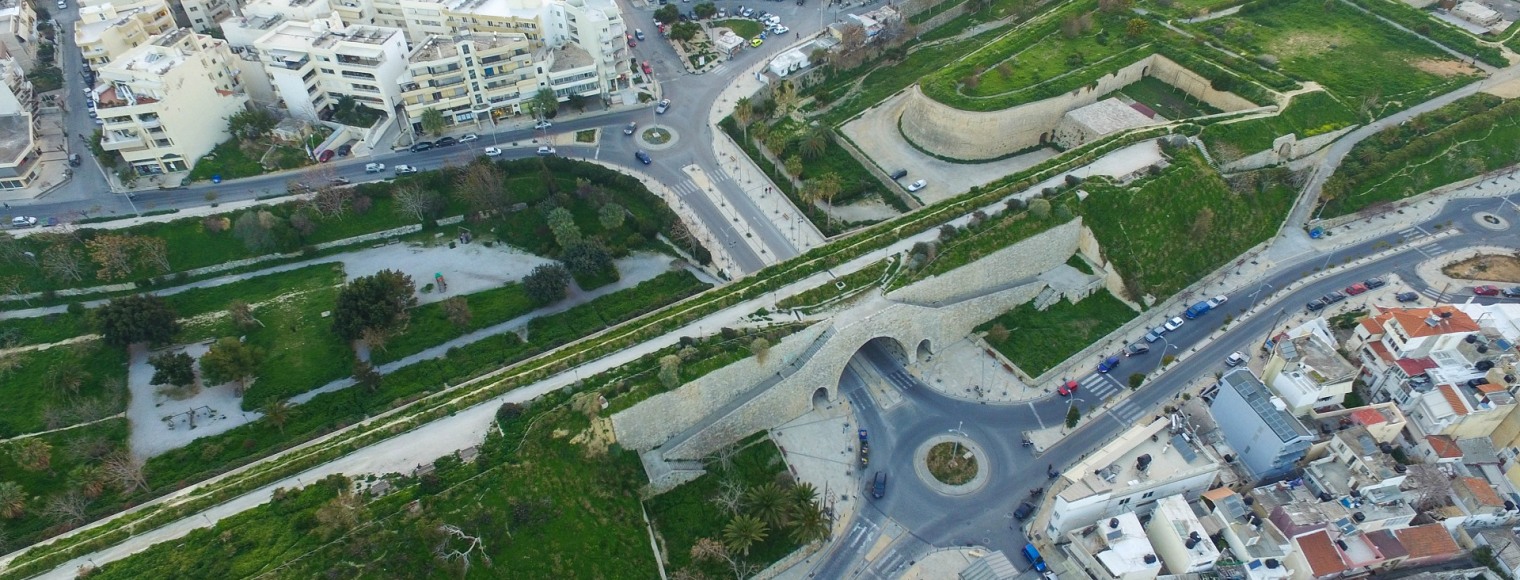
Venetian Walls
Heraklion with the historical name "Chandax", a coastal city strategically located for trade and wars of yesteryear, could only be fortified.
The walls of the city, like the city itself, as well as its name change over time depending on the conquerors, Byzantines, Arabs, Venetians and Ottomans. During the Venetian occupation, a new defensive system 'with ramparts' was devised to keep the enemy at bay, the bulk of the work of which was carried out in the second half of the 16th century. The additional fortifications included twelve outer bastions on which powerful guns were mounted.
An integral and indispensable element of each fortified enclosure was the moat formed around and outside it. Its purpose was to keep the enemy as far away from the fortress as possible, preventing him from approaching it. The new fortified enclosure of Candia (the name of the city during the Venetian occupation) includes seven bastions and gates were opened to facilitate movement. Some are exclusively for military use, others are public - urban gates leading from the city to the countryside and the sea, and there are also secondary gates. Today, some of the gates of the wondrous fortification remain standing, integrated into the urban fabric of modern Heraklion, reminding people walking around of the turbulent and fascinating history of the city.


